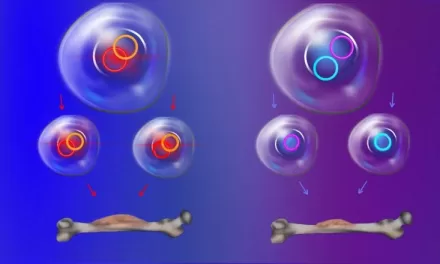In a groundbreaking study published in JAMA Dermatology, researchers at King’s College London have identified a genetic interaction that heightens the risk of developing frontal fibrosing alopecia (FFA). This new finding provides significant insight into the genetic factors underlying this distressing dermatological disorder.
Understanding Frontal Fibrosing Alopecia
FFA is a severe condition characterized by inflammation, scarring, and irreversible hair loss. The disorder primarily affects women and has been increasing in prevalence worldwide. Scientists believe that both genetic and environmental factors contribute to its onset.
Key Findings of the Study
The researchers conducted a meta-analysis of four separate cohorts of women with FFA across the UK and Europe. Their investigation focused on a cluster of immune-related genes known as the major histocompatibility complex (MHC), which helps the immune system recognize foreign substances. The study found that specific genetic variations in the MHC interact with a gene called ERAP1, increasing the likelihood of developing FFA.
This gene-to-gene interaction, known as “epistasis,” is a rare phenomenon in human genetics. Essentially, it means that the presence of a specific variation in one gene modifies the risk associated with another gene. Similar interactions involving ERAP1 have been observed in autoimmune diseases such as psoriasis and ankylosing spondylitis.
Evolutionary Insights and Future Implications
Interestingly, previous studies have linked ERAP1 and ERAP2 gene variants to survival during the Black Death, a devastating bubonic plague outbreak in the 14th century. While these genetic adaptations may have once provided protection against infections, they now appear to contribute to increased susceptibility to immune-related disorders like FFA.
Dr. Christos Tziotzios, Senior Lecturer at the St John’s Institute of Dermatology at King’s College London and Consultant Dermatologist at Guy’s and St Thomas’ NHS Foundation Trust, emphasized the significance of the study. He stated, “Our study is the largest ever genome-wide association study into frontal fibrosing alopecia. Since the disease was first described in 1994, its prevalence has surged. Our findings shed new light on its autoimmune basis and offer new directions for drug development.”
The research team hopes their discoveries will not only improve understanding of the genetic mechanisms behind FFA but also aid in predicting risk and developing targeted treatments. Scientists are now exploring the feasibility of a predictive genetic test for FFA and investigating potential drugs designed to inhibit ERAP1 activity.
Expert Reactions
Phil Brady, Chief Operating Officer at the British Skin Foundation, praised the study’s contributions: “This research marks a significant step forward in our understanding of FFA and why some individuals are more susceptible. The knowledge gained here could help in developing better diagnostic and treatment strategies, offering hope to those affected.”
Conclusion
This discovery represents a major advancement in dermatological research, potentially leading to new treatment avenues for individuals suffering from FFA. As scientists continue their investigations, this study serves as a promising step toward mitigating the impact of this distressing condition.
Disclaimer: This article is for informational purposes only and does not constitute medical advice. Readers should consult healthcare professionals for personalized medical guidance.











